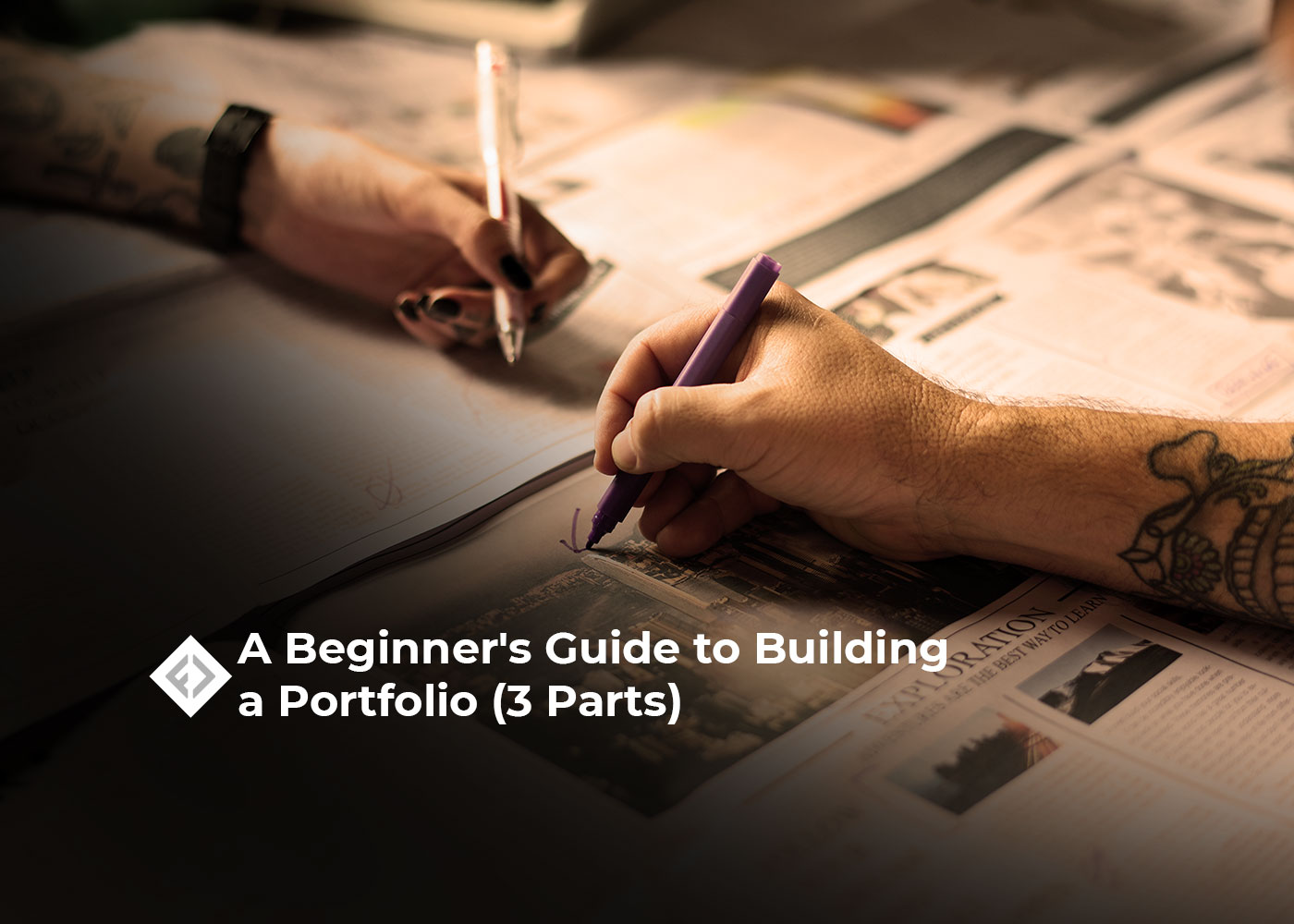As an investor, new or seasoned, it is crucial to have a broad knowledge of portfolio management to maximize your return on investment while reducing risk. Finding the right balance between different investments and ensuring protection for your assets are all essential components to constructing a successful portfolio. This piece will explore how one can create their own beginner-level portfolio.
Understanding the Risk-Reward Balance
A well-rounded portfolio starts with gauging how much risk you feel comfortable taking and which asset type will give the best return for your needs. As a new investor, it is paramount that you understand the essential elements of investing before making any further choices. Particular attention should be paid to asset allotment or allocating your investments between more secure alternatives and higher-risk options. Appropriate diversification across different investment types not only guards against losses but can also boost potential returns overall.
High-Risk Assets: Riskier assets can offer substantial yields. However, they are also prone to more extreme price fluctuations. Instances of this include cryptocurrencies and Contracts for Difference (CFDs). Investing in these types of assets requires the investor to be aware that the value may rise or fall dramatically over short periods.
Low-Risk Assets: Investing in safe investments typically yields a lower return, but the greater stability of their value counterweighs this. Investors can make educated decisions with full control over their investments. Examples include ETFs and stocks.
First Steps to Investing
Crafting a portfolio is often one of the most intimidating decisions investors encounter. With so many investments fluctuating rapidly, it can be daunting. Yet there’s one fundamental principle to consider: risk ought to follow greater expectations for returns. The higher the risk – meaning less promise of success – then the expected return should also be increased accordingly. To summarize, when taking more risks comes with larger rewards but novice investors must remain vigilant about being cautious first and foremost.
When it comes to investing, choices are abundant. Before you jump in and get started, though, make sure to thoroughly research what types of investments are best suited for your budget and future aspirations. To ensure that you form a portfolio that satisfies both these criteria – or consult with a financial expert if need be – brainstorm some ideas on which diversified assets could provide the maximum return on investment.
Diversification is the Key
For any novice investor, striking the ideal balance between risk and safety is paramount. Diversifying your portfolio can guarantee that both sides are adequately covered – meaning investing money into various investment products. So let’s explore how to build up an advantageous portfolio!
Use Different Asset Classes
When it comes to investing, diversification is key. To accomplish this goal, you should allocate your funds across various asset classes with different risks and rewards concerning market conditions. Commonly regarded asset classes include cash reserves, fixed-income securities such as bonds and mortgages, and stocks or equities. Placing your money into various assets within a portfolio setup can help reduce risk while still giving you the opportunity for lucrative returns on investment.
- Cash:Investing involves putting your money in secure investments with either fixed or variable interest rates and unrestricted access to the funds. The more consistent the rate of return, the better value it has compared to investing in riskier options such as fluctuating compound interests or overnight deposits.
- Fixed-income securities:Fixed-income securities may not provide a stable profit, but they are similar to cash investments in that these are mostly guaranteed fixed-income securities with an established expiry date and fluctuating market interest rate. Examples of such investment products include federal savings bonds or government bonds.
- Stocks:Stocks are the most popular form of investment around the world. Investors can opt to invest directly in individual stocks, which typically create passive income through dividends, or buy into ETFs composed of a mix of different stocks.
- ETFs:Exchange Traded Funds (ETFs) provide a convenient and cost-efficient way for investors to purchase a diverse range of stocks in one transaction. By utilizing ETFs, you can access the benefits of direct investment without having to analyze or understand the complexities of any given market.
- Mutual funds:Unlike ETFs, mutual funds are usually overseen by specialized managers who actively manage the investments and have varying performance objectives. This allows investors to delegate their capital management to experts.

Invest in Various Regions of the World
Investing in different countries is a tried-and-true way to diversify risk and safeguard your returns. That’s because the stock exchanges of one nation may gain momentum while those in other areas take a nosedive – yet, by spreading capital across numerous regions, you can more accurately gauge global market movements. With this strategy, you’ll be able to protect yourself from experiencing devastating losses caused by simultaneous downturns worldwide.
If you desire to disperse your capital beyond borders, it is best to utilize tracking ETFs or CFDs. Manually investing globally requires specific considerations: First and foremost, explore local laws for all countries you plan to invest in. Additionally, don’t forget the possible taxes and levy regulations that may differ from country to country – so remember to review any applicable rules before moving forward with your investment strategy!
No two markets are alike, and using this as a guideline is critical when making an investment decision. This should be especially considered during economic volatility or if you’re looking for specific stocks, such as those related to technology. Furthermore, consulting with global financial advisors can go a long way in ensuring that your investments are sound and profitable.
So How Can You Manage Your Portfolio?
Having diversified our portfolio, it’s all about finding the perfect approach. When you’re a novice investor, there are so many choices to make that confusion can quickly set in. Nevertheless, asset management is an essential part of investing, and smartly managing risk and safety should be a top priority when making decisions.
Have a Goal in Your Mind
When managing your portfolio, having a clear goal in mind is an indispensable way to ensure smart decisions are being made. Establishing boundaries for yourself and creating a plan of action will help you move closer to achieving that goal. Furthermore, it serves as great motivation and helps sharpen focus on progress – allowing you to recognize any changes that need to be made along the journey if necessary. Furthermore, having an impressive overall portfolio that achieves your long-term goals can be incredibly rewarding. Setting out with a goal in mind is great for staying organized with both short and long-term plans, helping you make efficient moves that maximize success.
Stop-Loss Limit Can Be A Good Idea For New Traders
For any investment choice, experienced investors, as well as newbies, must decide if they want to take a risk or go for a more secure option. A typical mantra of safeguarding investments is “Protect your assets and shield them from losses – include this in your investing decisions too.” By following that advice, you can protect yourself financially while still taking calculated risks with potential winnings.
When investing a large amount of capital as a novice, it is essential to consider your risk reduction possibilities. Setting an acceptable loss limit should always be at the forefront of any investor’s planning process; this helps prevent financial ruin and averts complete obliteration in cases where gains may no longer be attainable. After all, smart investors normally set their maximum losses not to exceed 15-20% of total funds invested – enabling them to maintain some level of security while avoiding bankruptcy.
Establishing a sound stop-loss limit on your investments will not only aid in keeping the original transaction within previously agreed upon profit and loss parameters, but it also provides you with more control over your finances.
Conclusion: Research Well, and Don’t Put All Your Eggs in One Basket
Building a portfolio is no small task; you should be proud of yourself for completing the first steps. It takes courage, knowledge, commitment, and creativity. You may still have some unanswered questions or feel intimidated by the prospect of managing your portfolio—and that’s okay. This beginner’s guide is meant to give you a jumping-off point on your finance journey by introducing you to the basics of building a portfolio. Consider this your financial foundation. Now that you’re finally ready to invest keep learning and stay involved in your finances. After all, it’s far too easy to make costly mistakes if you don’t fully research each option before investing in it while building and maintaining your portfolio over time. Finally, diversify your holdings! Don’t put all your eggs in one basket; exploring different kinds of investments will help you navigate markets, both good and bad, more easily. With confidence, hard work, dedication, and some advice from professionals when needed: Good luck!











